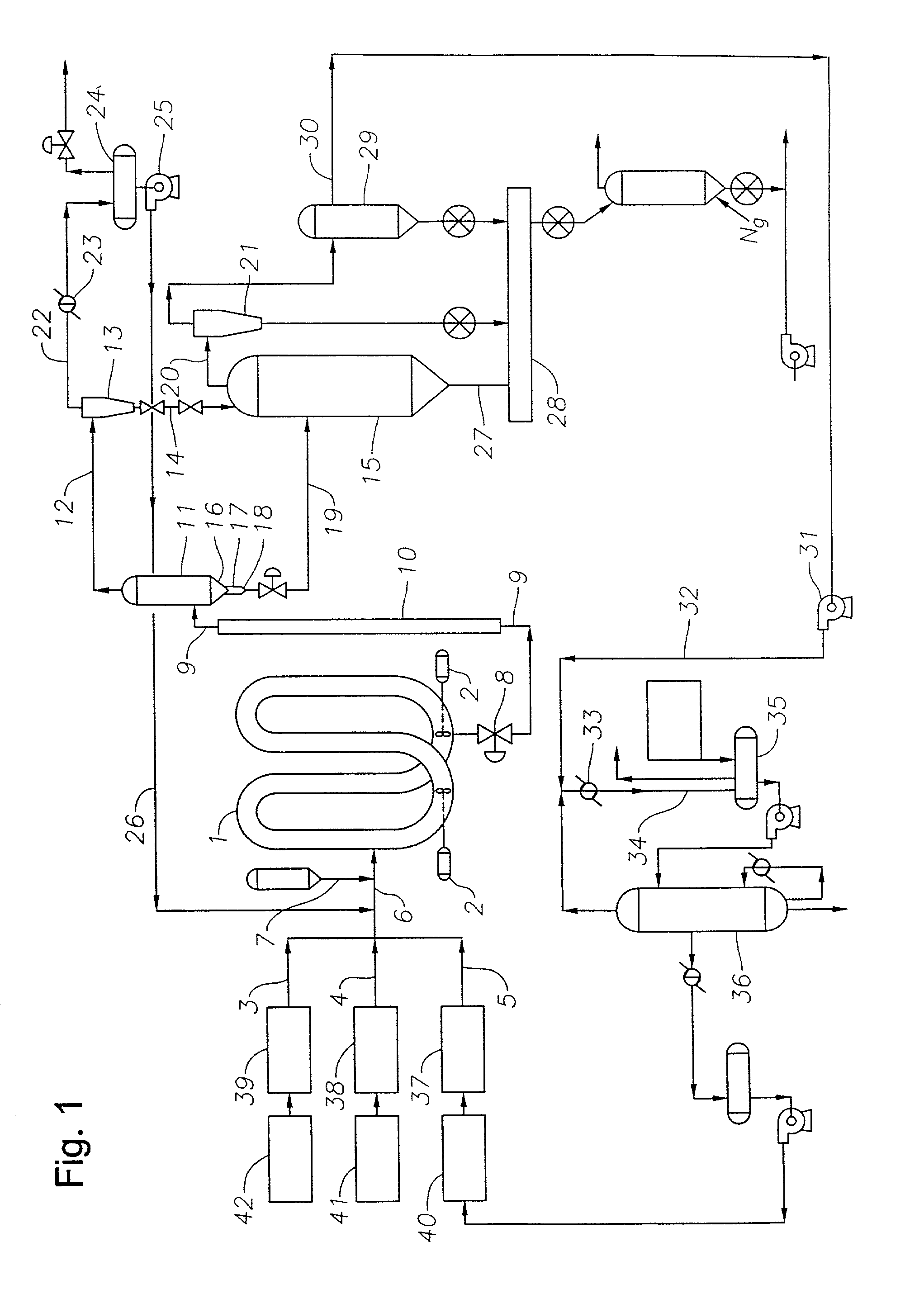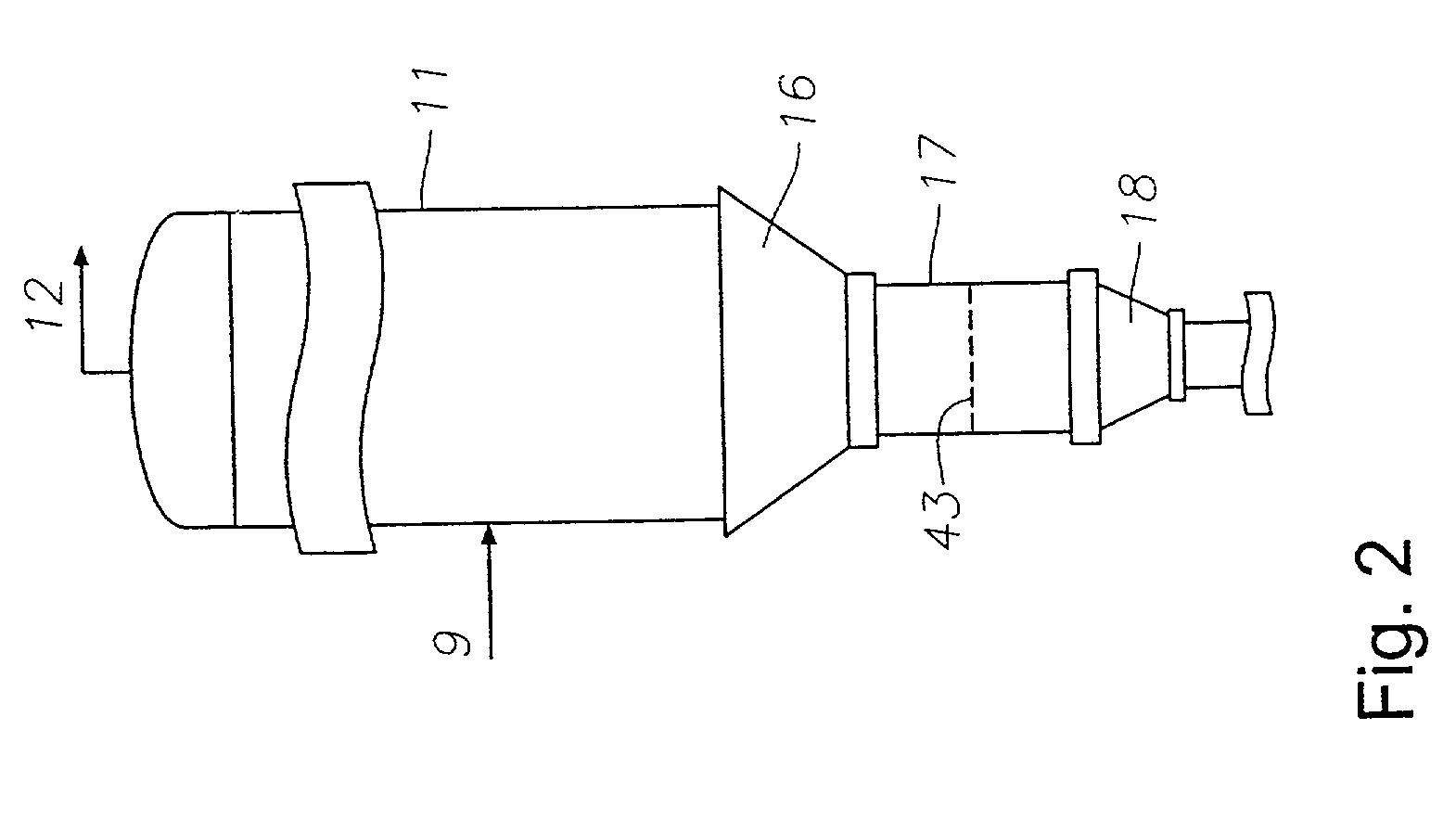Continuous slurry polymerization volatile removal
a technology of volatile removal and slurry, which is applied in the direction of separation processes, chemical/physical/physical-chemical processes, chemistry apparatuses and processes, etc., can solve the problems that equipment and utilities costs for distillation and treatment the cost of compression equipment and the required operation can be a significant portion of the cost of producing polymer, so as to increase the throughput of the reactor and reduce energy consumption. , the effect of increasing
- Summary
- Abstract
- Description
- Claims
- Application Information
AI Technical Summary
Benefits of technology
Problems solved by technology
Method used
Image
Examples
example 1
[0033]A typical ethylene polymerization process would be conducted at a temperature of about 215° F. and a pressure of 565 psia. An example of such a process would result in a polymerization effluent of about 83,000 pounds per hour comprising about 45,000 pounds per hour of polyethylene polymer solids and about 38,000 pounds per hour of isobutane and unreacted monomers. The continuously discharged polymerization effluent is flashed in the first flash tank at a pressure of about 240 psia and a temperature of about 180° F. to remove overhead about 35,000 pounds per hour of diluent and unreacted monomer vapors and entrained particulates. Auxiliary heat to impart an additional quantity of heat to the polymerization effluent is supplied by appropriate heating means during the transit between the discharge valve and the first flash tank. After removal of the fines, the isobutane vapor is condensed, without compression, by heat exchange at a pressure of about 240 psia and a temperature of ...
example 2
[0034]A typical ethylene polymerization process would be conducted at a temperature of about 215° F. and a pressure of 565 psia. An example of such a process would result in a polymerization effluent of about 83,000 pounds per hour comprising about 45,000 pounds per hour of polyethylene polymer solids and about 38,000 pounds per hour of isobutane and unreacted monomers. The continuously discharged polymerization effluent is flashed in the first flash tank at a pressure of about 240 psia and a temperature of about 175° F. to remove overhead about 23,000 pounds per hour of diluent and unreacted monomer vapors and entrained particulates. After removal of the fines, the isobutane vapor is condensed, without compression, by heat exchange at a pressure of about 240 psia and a temperature of about 112° F. The polymer slurry / solids discharging from the bottom of the first flash tank into the seal chamber form a continuous plug flow of concentrated polymer slurry / solids, which provides a pre...
PUM
| Property | Measurement | Unit |
|---|---|---|
| temperature | aaaaa | aaaaa |
| temperature | aaaaa | aaaaa |
| temperature | aaaaa | aaaaa |
Abstract
Description
Claims
Application Information
 Login to View More
Login to View More - R&D
- Intellectual Property
- Life Sciences
- Materials
- Tech Scout
- Unparalleled Data Quality
- Higher Quality Content
- 60% Fewer Hallucinations
Browse by: Latest US Patents, China's latest patents, Technical Efficacy Thesaurus, Application Domain, Technology Topic, Popular Technical Reports.
© 2025 PatSnap. All rights reserved.Legal|Privacy policy|Modern Slavery Act Transparency Statement|Sitemap|About US| Contact US: help@patsnap.com


